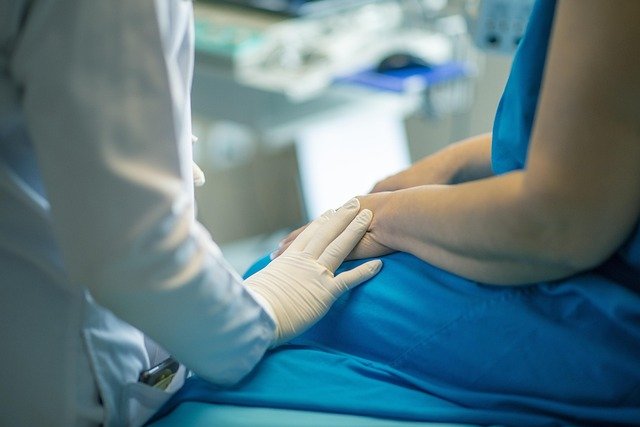Papilloma Treatment: Complete Guide to Detection and Care
Papillomas are benign growths that can appear on various parts of the body, caused primarily by human papillomavirus (HPV). While generally harmless, these growths can cause discomfort and cosmetic concerns. Understanding how to detect early signs and explore effective treatment options is crucial for managing this common condition. With proper medical guidance, most papillomas can be successfully treated using various approaches ranging from topical medications to minor surgical procedures.

What Are the Early Signs of Papillomas?
Recognizing papillomas in their early stages can help you seek timely medical attention. These growths typically appear as small, rough bumps on the skin that may resemble cauliflower in texture. Common early signs include small, flesh-colored or slightly darker bumps that gradually increase in size. They’re most frequently found on the hands, feet, face, and genital areas. Unlike other skin conditions, papillomas are usually painless but may become tender if irritated by clothing or frequent touching. The growths often have a distinctive rough surface and may appear in clusters, particularly in areas prone to friction.
How to Detect Different Types of Papillomas?
Detection methods vary depending on the type and location of papillomas. Common warts on hands and feet are easily visible and can be self-detected through regular skin examination. Plantar warts on the soles of feet may appear as flat growths with small black dots and cause discomfort when walking. Genital papillomas require professional medical examination, as they may be less obvious and could indicate more serious HPV strains. Facial papillomas are typically noticed during routine grooming. Regular self-examination of your skin, particularly areas prone to cuts or friction, can help identify new growths early.
What Professional Treatment Options Are Available?
Medical professionals offer several effective treatment approaches for papillomas. Cryotherapy, using liquid nitrogen to freeze the growth, is one of the most common methods and typically requires multiple sessions. Electrocautery involves burning the papilloma with an electric current, while laser therapy uses focused light beams to destroy the tissue. For larger or stubborn growths, surgical excision may be recommended. Topical treatments like imiquimod cream can stimulate the immune system to fight the virus. Your healthcare provider will determine the most suitable approach based on the size, location, and type of papilloma.
Which Treatment Tips Improve Success Rates?
Several strategies can enhance treatment effectiveness and prevent recurrence. Maintaining good hygiene and keeping the affected area clean and dry is essential throughout treatment. Avoid picking or scratching papillomas, as this can spread the virus to other body parts. Follow your healthcare provider’s instructions precisely, especially regarding post-treatment care and follow-up appointments. Boosting your immune system through proper nutrition, adequate sleep, and stress management can help your body fight the underlying viral infection. If you have multiple papillomas, treating them simultaneously often yields better results than addressing them individually.
Understanding Papilloma Treatment in Australia
Australian healthcare providers typically recommend a conservative approach to papilloma treatment, with many general practitioners equipped to handle common cases. The Therapeutic Goods Administration (TGA) has approved various topical treatments available through prescription, including podophyllotoxin and imiquimod. Public hospitals and specialized dermatology clinics across major cities like Sydney, Melbourne, and Brisbane offer comprehensive treatment services. Many treatments are covered under Medicare, particularly when performed by qualified medical professionals. Aboriginal and Torres Strait Islander communities have access to specialized healthcare programs that address HPV-related conditions through culturally appropriate care frameworks.
Treatment Cost Considerations and Provider Options
Understanding the financial aspects of papilloma treatment helps in making informed healthcare decisions. Treatment costs vary significantly based on the method chosen and provider type. Public healthcare through Medicare typically covers consultations and basic treatments, while private specialists may offer faster access to advanced procedures.
| Treatment Type | Provider Type | Cost Estimation (AUD) |
|---|---|---|
| GP Consultation + Cryotherapy | Bulk-billing GP | $0 - $85 |
| Dermatologist Consultation | Private Specialist | $200 - $400 |
| Laser Treatment | Private Clinic | $150 - $500 per session |
| Surgical Excision | Public Hospital | $0 - $200 |
| Topical Prescription Medications | Pharmacy (PBS) | $15 - $45 |
Prices, rates, or cost estimates mentioned in this article are based on the latest available information but may change over time. Independent research is advised before making financial decisions.
Private health insurance may cover specialist consultations and procedures, depending on your level of coverage. Many dermatology clinics offer payment plans for extensive treatments, making advanced options more accessible to patients.
Conclusion
Effective papilloma management begins with early detection through regular skin examination and understanding the characteristic signs of these common growths. While most papillomas are harmless, professional medical evaluation ensures proper diagnosis and treatment planning. Australian patients have access to various treatment options through both public and private healthcare systems, with costs varying significantly based on the chosen approach. Success in treatment often depends on following professional guidance, maintaining good hygiene practices, and addressing underlying immune system factors. With appropriate care and patience, most papillomas can be successfully treated, preventing complications and improving quality of life.
This article is for informational purposes only and should not be considered medical advice. Please consult a qualified healthcare professional for personalized guidance and treatment.




